Cayenne Hermit
Cayenne, the Guianas, and Northern Brazil?
Lesson has given a tolerably good figure of this species in the fourth plate of his “Histoire Naturelle des Colibris,” while the figure in the next plate, which he states to be the female, has reference not only to another species, but to one pertaining to a distinct form, to which the generic appellation of Glaucis has been given: it represents, in fact, either the young of G. hirsutus or G. Mazeppa, as is shown by the concentric marks on the back, and the pointed white tips of the tail-feathers.
It is surprising that Lesson should have thus erred, for had he studied the members of the genus Phaëthornis even but superficially, he must have observed that no difference occurs in the colouring of the sexes, and that the young assume the livery and the same form of tail as the adults from the earliest age.
The Phaëthornis superciliosus appears to have been known to Linnæus and most of the older writers. It is one of the commonest species of the genus, examples having been sent to Europe for at least the last hundred years. Its native countries are Guiana, Cayenne, and Surinam; its range is known to extend towards Brazil as far as the confluence of the Amazon, but, I believe, does not advance farther south than Bahia, which Mr. Reeves informs me is one of the provinces in which it is found. It is believed that the sexes differ little in colour, but that in size the female is a trifle smaller than her mate.
The term superciliosus applied to this species is by no means an appropriate or distinctive appellation, all the species of the genus being similarly marked; but a name once applied cannot be changed.
Head, upper surface and wing-coverts bronzy brown, darkest on the head; lores and ear-coverts blackish brown, bounded above and below by stripes of buff; wings dark purplish brown; rump and upper tail-coverts barred with bronze and brown; lateral tail-feathers bronzy green at the base, the apical portion blackish brown, with an arrow-head-shaped mark of buff at the tip; two centre tail-feathers bronzy green at the base, blackish brown for the second third of their length, the prolonged or apical third white, gradually blending with the dark hue of the middle portion; under surface dusky fawn-colour, clouded with dark brown approaching to black on the throat; under tail-coverts buff; upper mandible black; the basal three-fourths of the under mandible fleshy red, the tip black.
The figures are of the size of life. The plant is the Astrocaryum rostratum.
It will be seen that the [below] list of synonyms differs from that given with my account of this species. I adopt these synonyms on the authority of Dr. Cabanis, who considers that I am in error in applying the term superciliosus to the bird I have figured under that name, and that it properly belongs to the one I have called Pretrei,—an opinion which is probably correct, as the German naturalists are doubtless better acquainted with the type specimens of continental writers than we can be: the synonyms of malaris and superciliosus are therefore given in accordance with the views of Dr. Cabanis.
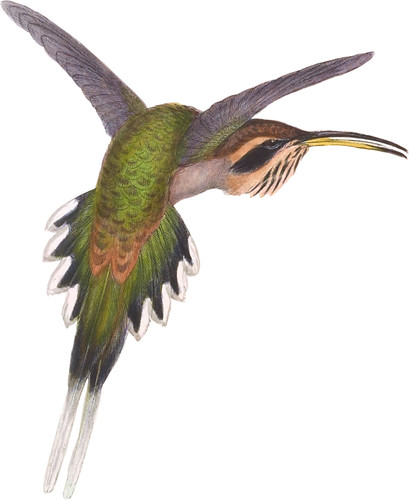 Phœthornis Eurynome
Eurynome Hermit
Phœthornis Eurynome
Eurynome Hermit
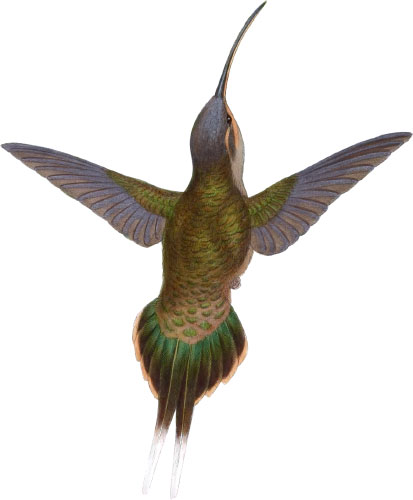 Phaëthornis fraterculus
Allied Hermit
Phaëthornis fraterculus
Allied Hermit
 Phaëthornis cephalus
Mexican Hermit
Phaëthornis cephalus
Mexican Hermit
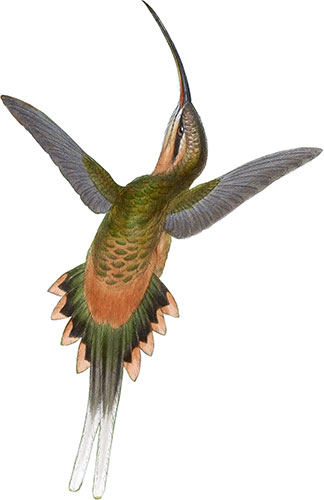 Phaëthornis syrmatophorus
Train-bearing Hermit
Phaëthornis syrmatophorus
Train-bearing Hermit
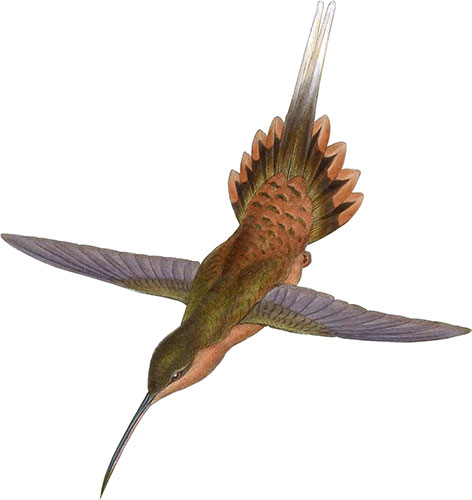 Phaëthornis Philippi
De Filippi’s Hermit
Phaëthornis Philippi
De Filippi’s Hermit
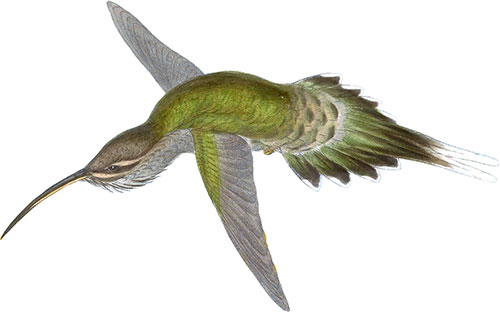 Phaëthornis hispidus
Hairy Hermit
Phaëthornis hispidus
Hairy Hermit
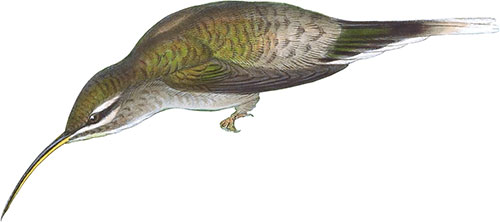 Phaëthornis Oseryi
D’Orsery’s Hermit
Phaëthornis Oseryi
D’Orsery’s Hermit
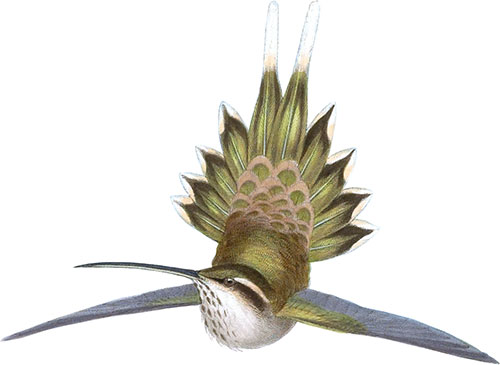 Phaëthornis anthophilus
Pallid Hermit
Phaëthornis anthophilus
Pallid Hermit
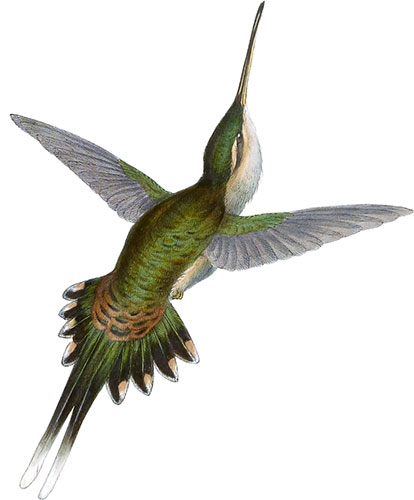 Phaëthornis Bourcieri
Bourcier’s Hermit
Phaëthornis Bourcieri
Bourcier’s Hermit
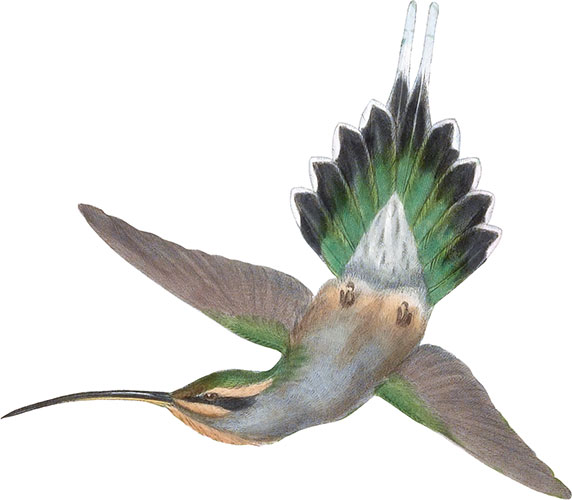 Phaëthornis Guy
Guy’s Hermit
Phaëthornis Guy
Guy’s Hermit
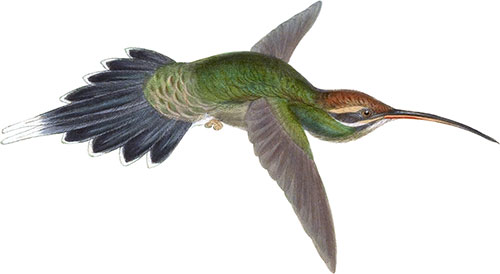 Phaëthornis Yarugui
Yaruquian Hermit
Phaëthornis Yarugui
Yaruquian Hermit
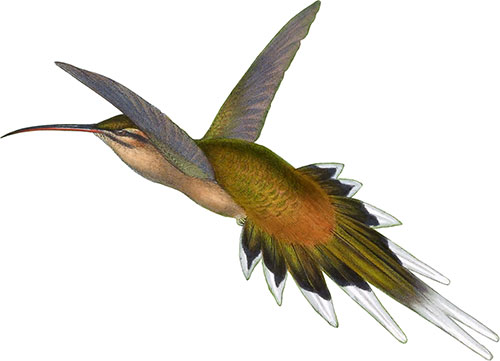 Phaëthornis Pretrei
Pretre’s Hermit
Phaëthornis Pretrei
Pretre’s Hermit
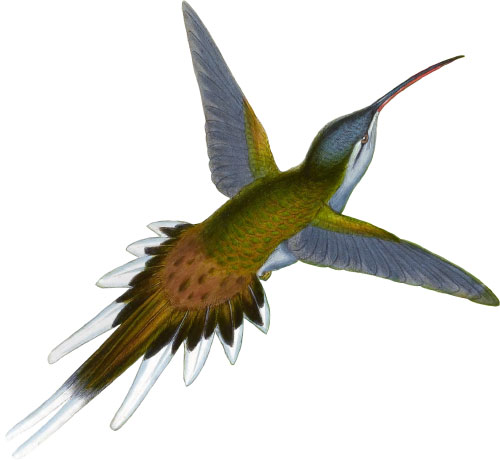 Phaëthornis Augusti
Sallé’s Hermit
Phaëthornis Augusti
Sallé’s Hermit
 Phaëthornis intermedius
Middle-sized Hermit
Phaëthornis intermedius
Middle-sized Hermit
Featuring all 422 illustrated species from John Gould’s A Monograph of the Trochilidæ, or Family of Humming-Birds arranged by color.